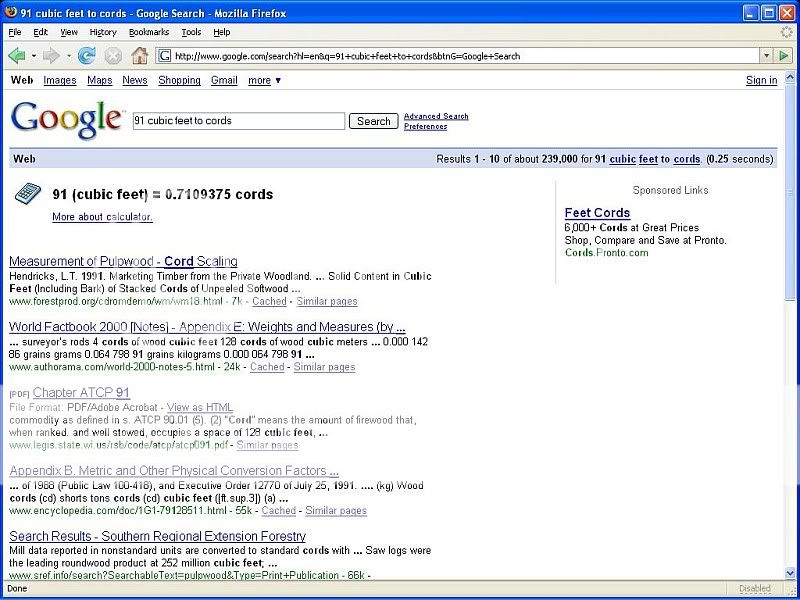I think you have that backward.
Harry K
+1... Most states will NOT allow firewood sales using terms like "truckload" or "pile". Check your jurisdiction's laws and ordinances. You may be surprised at what you find.

I think you have that backward.
Harry K
Your wrong if people knew they only getting 2/3 of the wood they thought they were, they scream rape. Hey if your paying for 128 cu.ft of wood, I want it all not 70% of it. I know it's impossible to ever be accurate, and is easy to screw people. So a cord should be measured at 89.6 cu.ft instead of 128, dispite it's cubic measurements. It's kinda misleading. Thats like buying 10 gallons of gas but only getting 7 instead.

Gotta do it , Seems as though this has been discussed a time or two before. LOL :monkey:
We sell real country firewood and mixed hardwoods;
are you nuts tom trees
We don't debate about what a "foot" or a "yard" is, so why debate about the meaning of a cord?









Before you start pointing the "your wrong" (sic) finger, you need to read the definition of cord. For starters, the "70% air" number is a purely theoretical number that varies with wood size and shape. The definition, as I have seen in many places, refers to the size of the stack and the fact that it is "tightly stacked". Other than using some sort of water displacement method of measuring, it is impossible to quantify the volume of "solid wood" in a stack. That is why the LEGAL definition, accepted by all jurisdictions that I am aware of, generally reads "A stack of wood 4' x 4' x 8' tightly stacked, or 128 cu ft tightly stacked" as Turnkey stated. Even if you do know of a way to measure the "solid wood" that you deliver, NO state will support your "70% air" assumption.
We cut firewood in 16" length for several reasons: 1) few customers can't fit 16" wood in their fireplace / stove; 2) 3 rows 4'high x 8' long = a cord; 3) there is no doubt or discussion about "rounding off" like can happen with 18" length; 4) it stacks well on pallets for drying and storage (1/2 cord per pallet - 4'x4'x4').
Do us all a favor and don't confuse the customers by trying to redefine what a cord is based on your theories of how much air exists in a stack. I could easily prove your 70% number wrong. I could show you a cord that is only 60% solid (splits from knarly twisted crotches that wont stack tight) and I could show you a cord that is 95% solid wood (square splits and slabs that stack VERY tight).
 First, thanks for the neg rep! And I'm not trying to redefine what a cord is. I know what the measurements are and that it is phsically impossible for a sane person to ever want to measure the actual cubic volume content. I could easily prove 70% air is the wrong number also, It is 30%. I couldn't imagine what 70% air space would look like. I'm just saying that if you are purchasing 128 cu.ft of wood a guy should recieve 128 cu.ft of solid wood or at least in his favor. But it doesn't work like that unfortunatly, I know it's been the std. system for years and years but I think the definition is a little misleading to people. It's my opinion, I know, and I'm sticking to it. Sorry if you dislike that!
First, thanks for the neg rep! And I'm not trying to redefine what a cord is. I know what the measurements are and that it is phsically impossible for a sane person to ever want to measure the actual cubic volume content. I could easily prove 70% air is the wrong number also, It is 30%. I couldn't imagine what 70% air space would look like. I'm just saying that if you are purchasing 128 cu.ft of wood a guy should recieve 128 cu.ft of solid wood or at least in his favor. But it doesn't work like that unfortunatly, I know it's been the std. system for years and years but I think the definition is a little misleading to people. It's my opinion, I know, and I'm sticking to it. Sorry if you dislike that!I think you have that backward.
Harry K